Molokhia is a comforting and flavorful Middle Eastern dish made with lemony molokhia leaves, tender chicken, and served over fluffy white rice. My version uses homemade chicken stock and is finished with a sumac onion-lemon salsa for brightness.
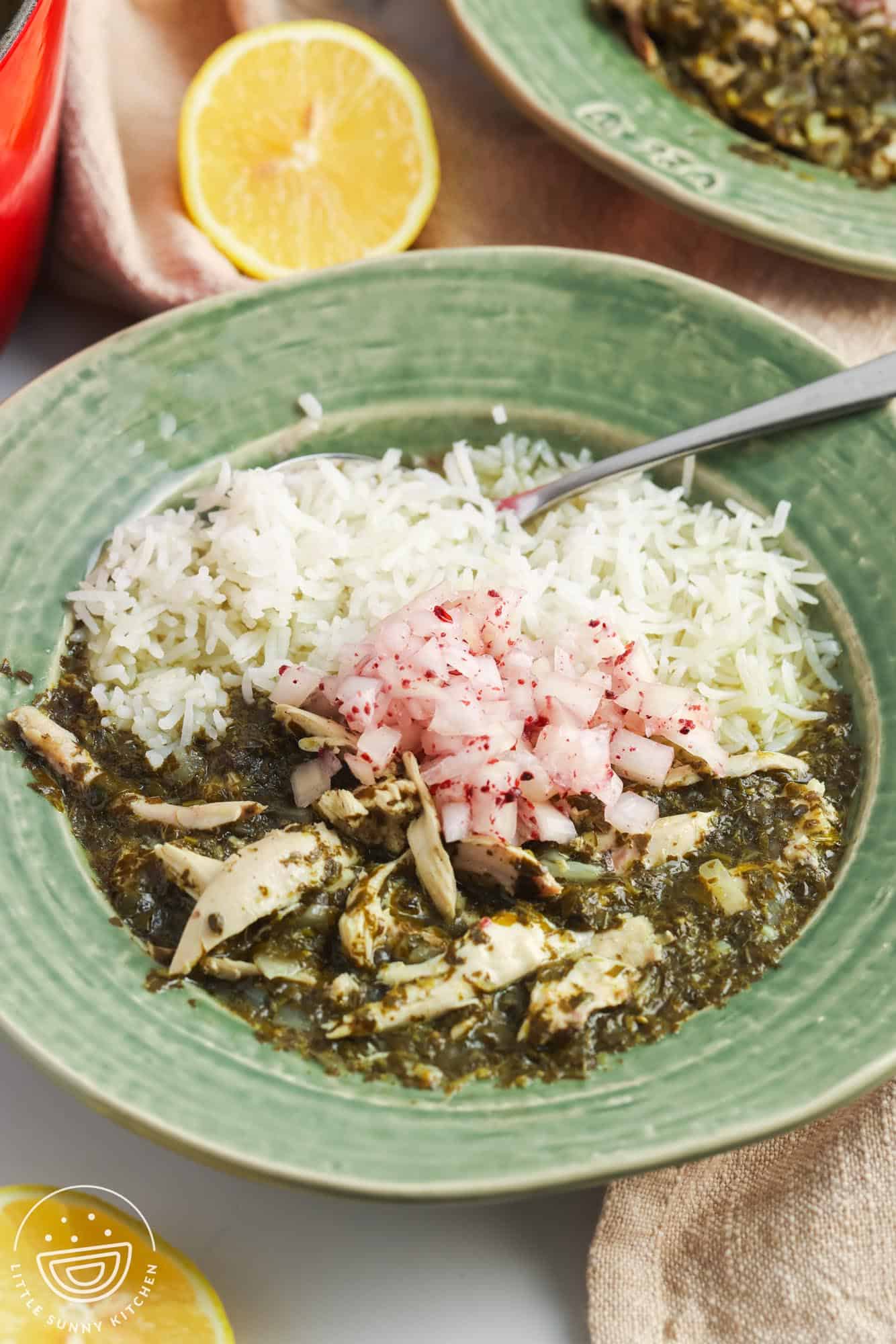

Why This Dish Means So much to Me
I still remember my mom sitting with our neighbors, chatting and laughing as they picked through giant bundles of fresh molokhia leaves. I used to help them too, carefully separating the leaves while listening to their conversations. It was a summer ritual, washing, drying, and freezing enough to last the whole year.
Molokhia has always been a staple in our family. We cooked it often, and we still do to this day. The garlicky gravy is hearty and comforting, and the whole dish truly tastes like home. Everyone in my family loves it, even the picky eaters.
After moving to the UK, I started using frozen molokhia since fresh isn’t available here, and while it’s not exactly the same, it still brings back all the memories and familiar flavors I grew up with.
Where to Buy Molokhia
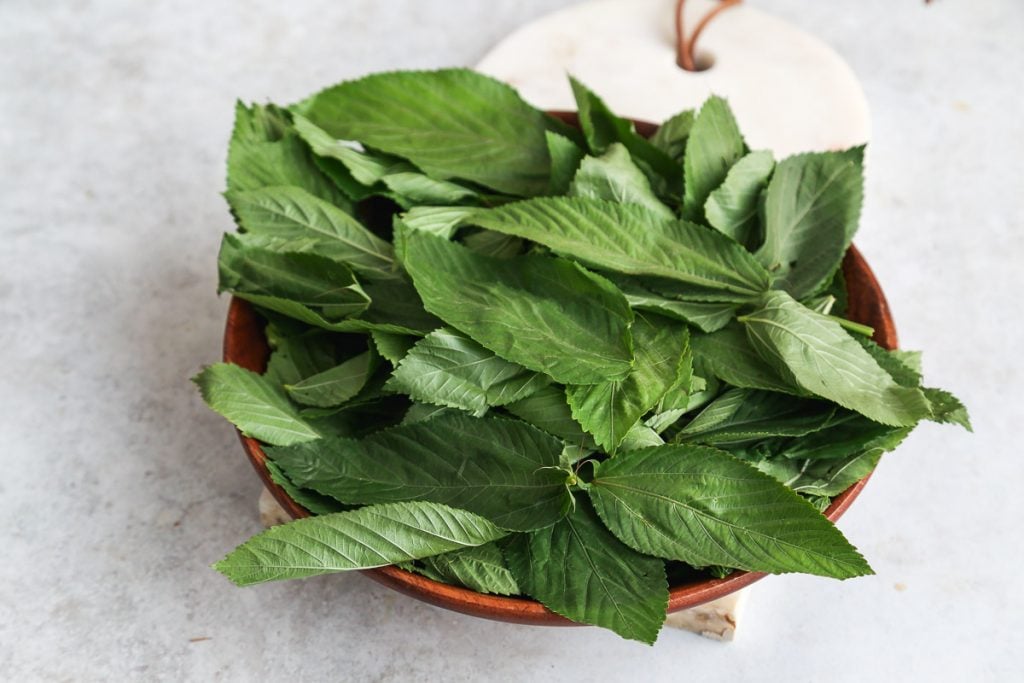
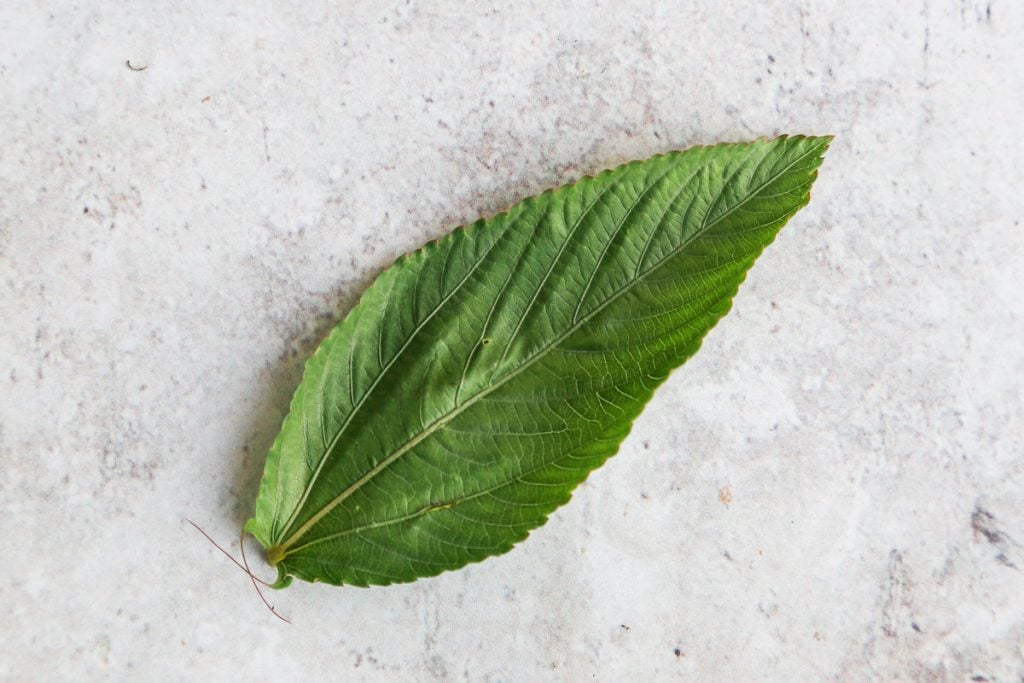
This is an ingredient that you will really only find in Middle Eastern countries, where it is easily found fresh when it’s in season. Many cooks will buy bunches of jute and freeze them to use all year long.
If you’re outside the Levant, look for dried or frozen jute leaves at Middle Eastern specialty stores. I find them in the frozen section of my local Asda supermarket. You can also buy dried molokhia leaves online from various places.
To learn the difference between Nalta leaves and Mallows, check out my Middle Eastern Mallow Khobeizeh Recipe that explains the differences.
Ingredient Notes
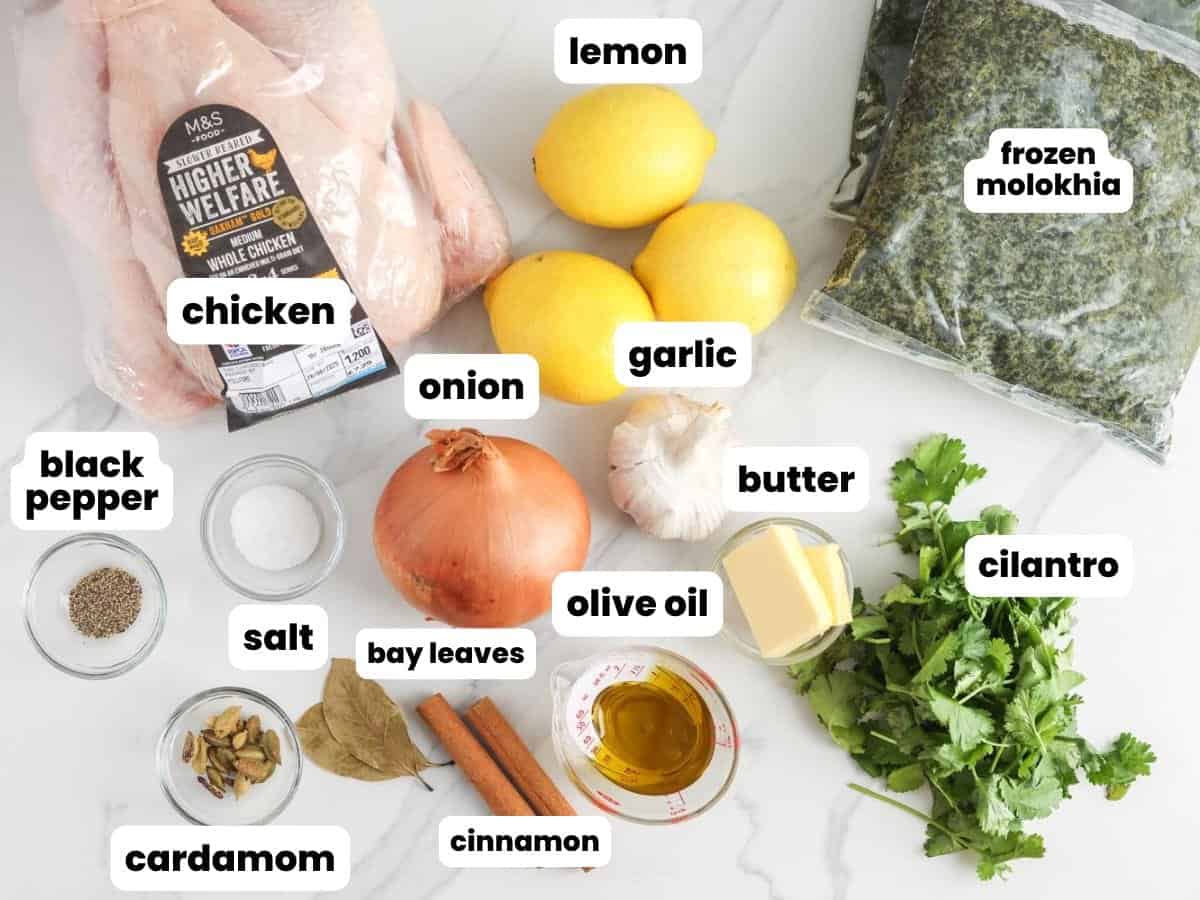
- Molokhia Leaves: Fresh leaves are best, and frozen leaves are my next choice. If neither is available, use dried leaves instead. Before using dried leaves, rehydrate them in some warm water.
- Chicken: I love the flavor that comes from using a whole chicken to make this dish, but you can use bone-in chicken pieces as well.
- Cardamom Pods, Cinnamon Sticks, Bay Leaves, and Garlic: Add these aromatics in with the chicken while it’s poaching. Whole spices work best.
- More Garlic: In total, you’ll need about 14 cloves of garlic to make this recipe. It’s so savory and comforting this way.
- Chicken Stock: We’ll use the cooking liquid from the chicken as the base of our soup, along with a chicken bouillon cube to add a bit more flavor.
- Onion Salsa: My mom’s twist on this traditional garnish includes ground sumac and freshly squeezed lemon juice.
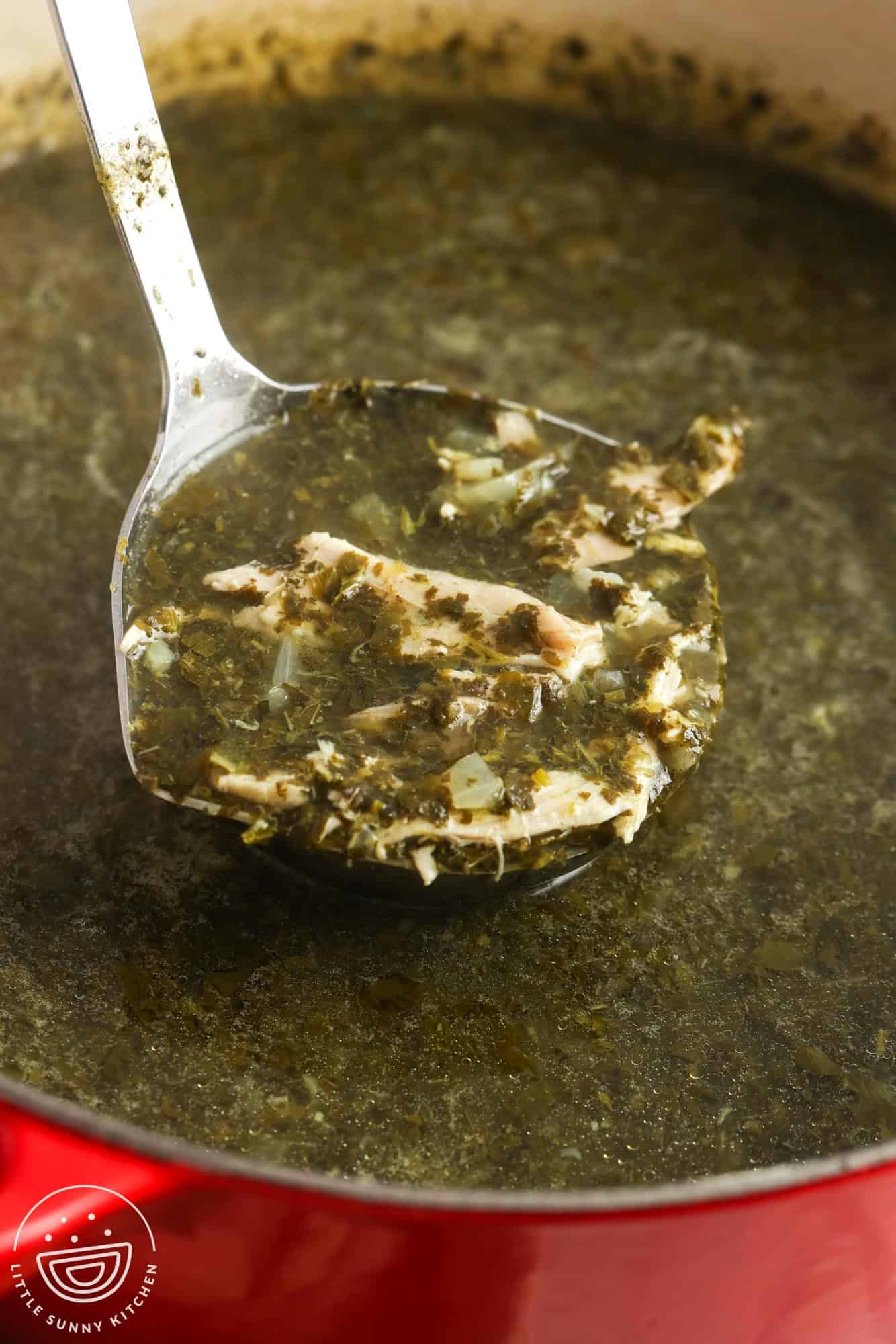
Recipe Tips
- While cooking molokhia, check on it often as the leaves can stick to the bottom of the pot easily. If the stew seems too thick, add a bit more water and continue cooking until heated through.
- Cooked molokhia leaves can be slimy if not prepared correctly. The trick is to add some sort of acid to the broth before adding the leaves. In this recipe, we are using lemon juice. Other people might add fresh tomato or tomato paste.
- To serve 6 people with this recipe, I usually cook 2 or 3 cups of rice. I like to mix medium with long grain rice (calrose with basmati) for the best fluffy rice that works well with a broth based dish.
- I like to finish this dish with the sumac onion salsa, and an extra squeeze of fresh lemon juice over the rice and chicken. It’s also delicious with Lebanese rice.
- Leftover molokhia can be stored in an airtight container in the fridge for up to 4 days, or you can freeze individual servings for up to 3 months.
Did you make this? Be sure to leave a review below and tag me on Facebook, Instagram, or Pinterest!
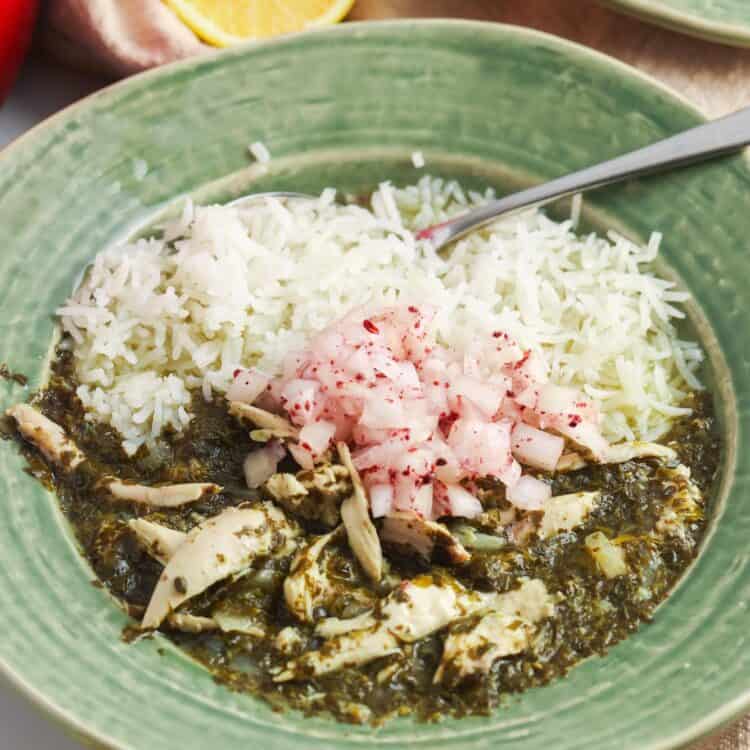
Molokhia with Chicken
Equipment
- Large pot with lid
- Large dutch oven
Ingredients
For the chicken and stock:
- 1 (1.2 kg) whole chicken about 2.6 pounds
- Water enough to cover the chicken
- ½ large yellow onion
- 1 tablespoon green cardamom pods
- 2 cinnamon sticks
- 4 cloves garlic
- 2 bay leaves
For the molokhia:
- 2 tablespoons (30 ml) olive oil
- 2 tablespoons (28 g) unsalted butter
- 1 large yellow onion finely diced
- 2 bunches fresh cilantro chopped
- 10 cloves garlic minced
- 8 cups (2 liters) chicken stock
- ⅓ cup (80 ml) fresh lemon juice
- 1 pound (450 g) frozen molokhia leaves fresh or dried leaves can also be used.
- 2 teaspoons salt or to taste
- ½ teaspoon ground black pepper
- 1 chicken bouillon cube
For the onion salsa:
- 1 medium yellow onion finely diced
- 1 teaspoon ground sumac
- 2 tablespoons (30 ml) fresh lemon juice
- ¼ teaspoon salt
Instructions
- Place the chicken in a large pot and cover with water. Bring to a boil, skim off any scum that rises to the top.
- Add the onion, cardamom pods, cinnamon sticks, garlic cloves, and bay leaves. Reduce heat to a simmer and cook for about 25 minutes, or until the chicken is fully cooked.
- Remove the chicken from the pot. Discard skin and bones, and shred the meat into bite-sized pieces. Strain the broth through a fine mesh sieve and measure out 8 cups (2 liters) for the recipe.
- In a skillet over medium-low heat, heat the olive oil and melt the butter. Add the onion and cook until soft, about 5 to 6 minutes.
- Add the chopped cilantro and minced garlic. Cook for 1 minute until fragrant, then remove from heat.
- In a large Dutch oven, add the reserved chicken stock. Stir in the sautéed garlic and cilantro mixture, then add the lemon juice.
- Add the molokhia leaves and cook uncovered over medium heat, stirring occasionally, until fully thawed and blended into the broth, about 10 minutes.
- Season with salt, ground black pepper, and the chicken bouillon cube. Taste and adjust seasoning as needed.
- Return the shredded chicken to the pot and allow it to heat through gently, about 2 to 3 minutes.
- To make the onion salsa, combine chopped onion with sumac, lemon juice, and salt. Mix well.
- Serve molokhia hot with cooked white rice, and top each portion with a spoonful of the onion salsa.
Notes:
- To make a vegan version of molokhia, skip the chicken and use add vegetable stock and a veggie bouillon cube.
- While cooking molokhia, check on it often as the leaves can stick to the bottom of the pot easily. If the stew seems too thick, add a bit more water and continue cooking until heated through.
- To serve 6 people with this recipe, I usually cook 2 or 3 cups of rice.
- Leftovers can be stored in the fridge for up to 4 days, or you can freeze individual servings for up to 3 months.
Nutrition Information
This website provides approximate nutrition information for convenience and as a courtesy only. Nutrition data is gathered primarily from the USDA Food Composition Database, whenever available, or otherwise other online calculators.
© Little Sunny Kitchen
This recipe was first published on Little Sunny Kitchen on April 11, 2016. It was updated in 2025 with an improved recipe, new images, and recipe tips.
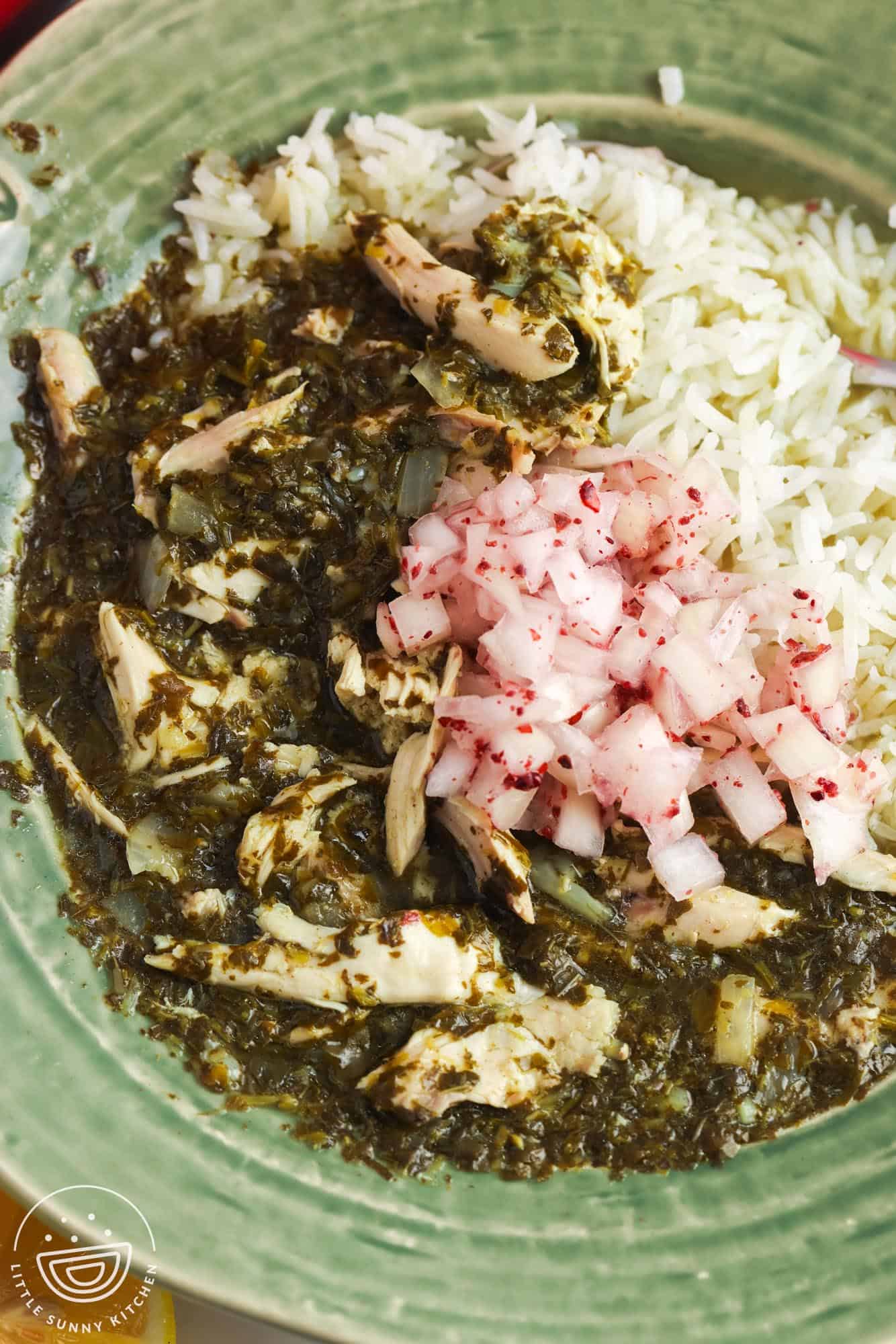
What is Molokhia
Very popular dish in Middle Eastern countries, including Jordan, Palestine, Syria, and Egypt. It’s made from either fresh, dried, or frozen Molokhia leaves (Jew’s mallow or Jute leaves or nalta) that are used as a vegetable in this recipe.
The leaves are boiled in water or stock, resulting in a thick soupy liquid often served with white rice on the side. The slightly slimy effect of the Molokhia when it’s cooked is very similar to okra, but it’s the pleasant kind of slimy, not the sticky kind.
What does molokhia taste like?
Molokhia has a uniquely earthy and slightly grassy flavor, somewhat similar to spinach or okra, but with a more herbal, rich character.
When simmered in garlicky chicken broth and brightened with lemon juice, the taste becomes deeply savory, aromatic, and comforting.
The texture is silky and slightly viscous, especially when using finely minced leaves. Paired with tender chicken and fluffy rice, it’s a well-balanced dish, rich without being heavy, and fresh without being sharp.
Regional Variations
Molokhia is a beloved dish across the Arab world, with regional differences in flavor and preparation.
- Lebanese/Syrian Style is what we’re making here. It often features shredded chicken, lots of garlic and cilantro, and is served with rice and onion salsa. Generally, it’s made with whole molokhia leaves, keeping the broth light and herbal.
- Palestinian and Jordanian Versions are similar, but usually serve the chicken on the bone rather than shredded. The chicken is sometimes roasted in the oven after being boiled to give it a nice crispy exterior.
- Egyptian-style molokhia uses finely minced leaves, and the broth is darker and richer, sometimes made with chicken or rabbit. Toasted coriander is often added for depth.
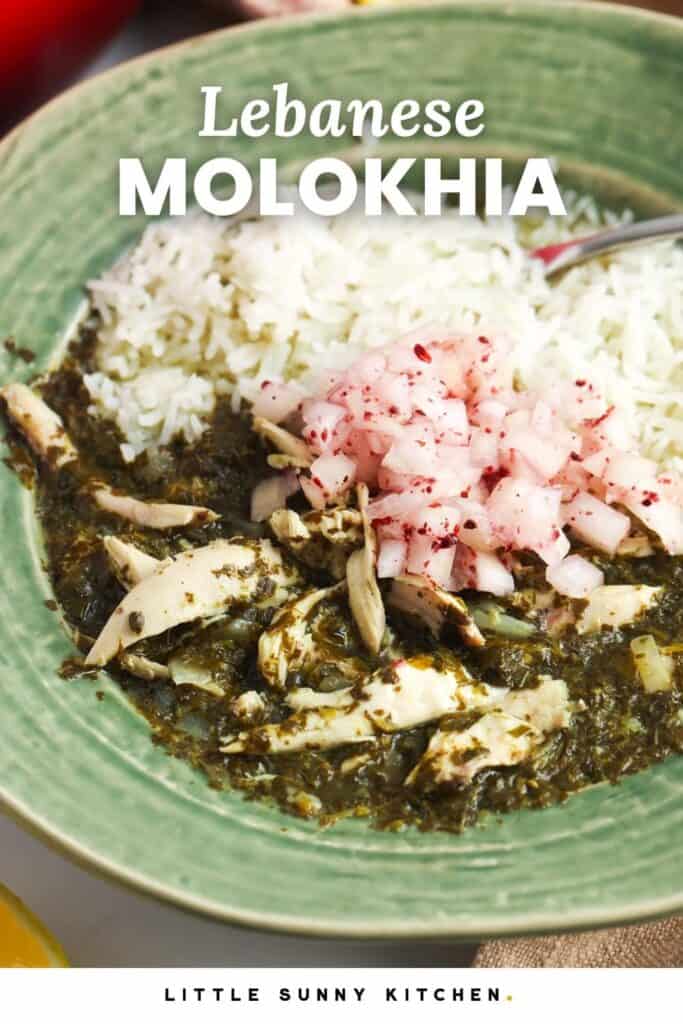


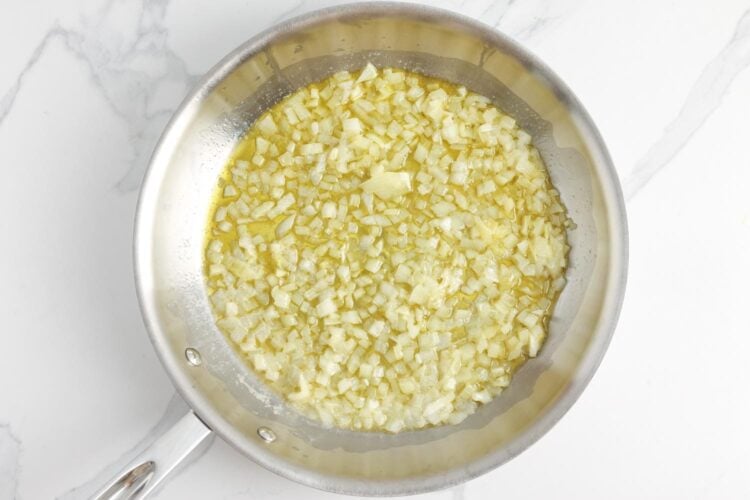
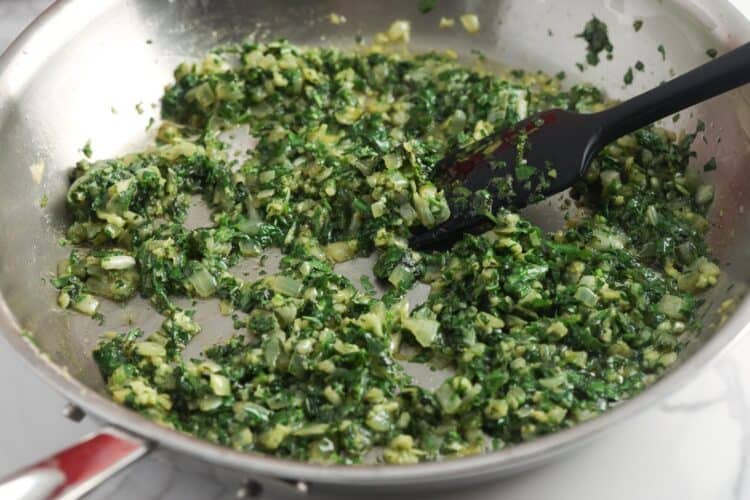
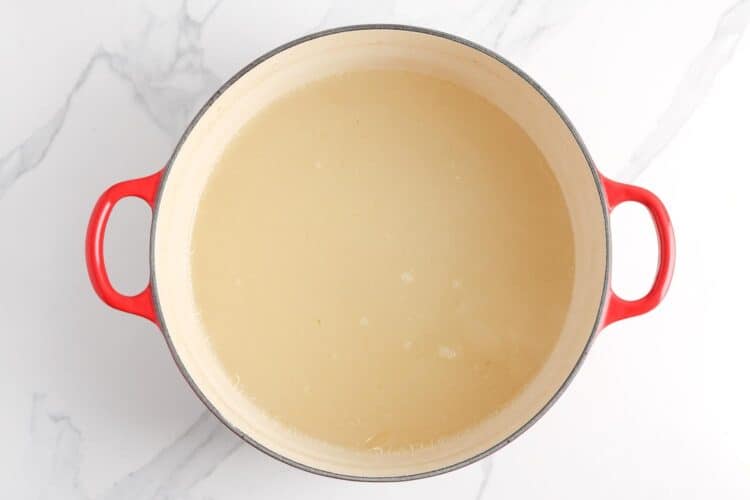
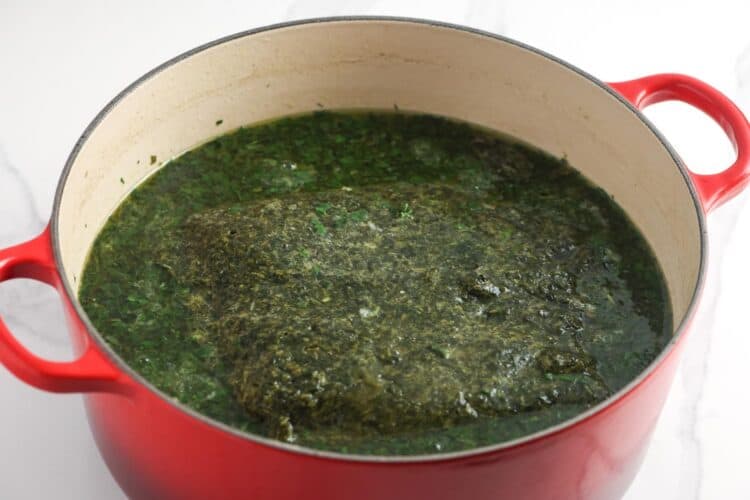
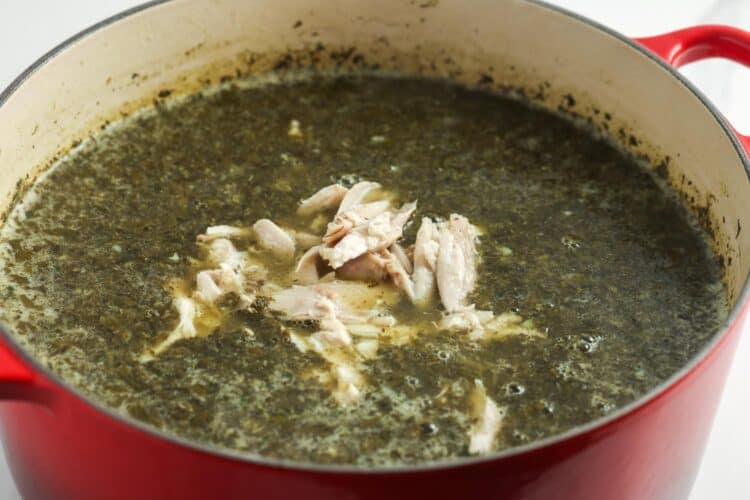

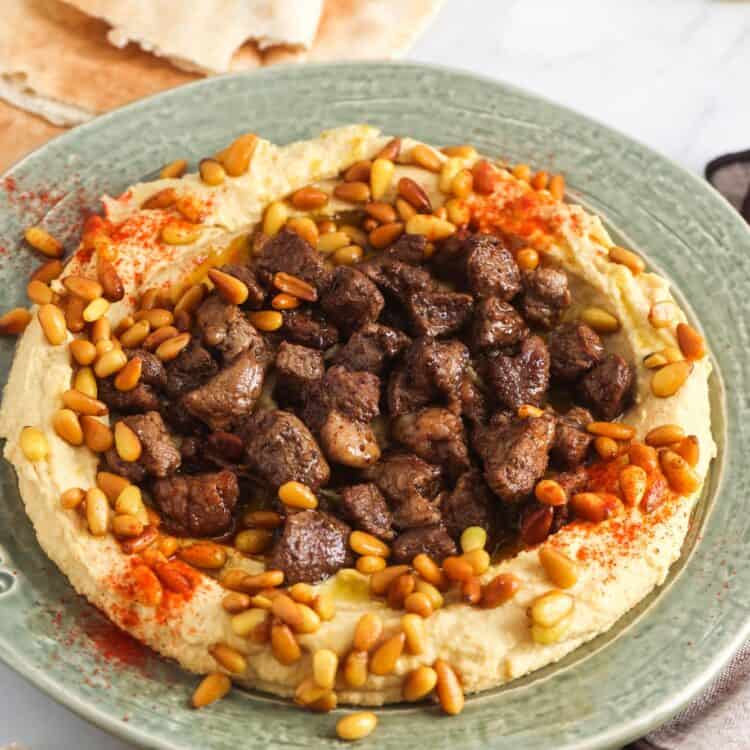
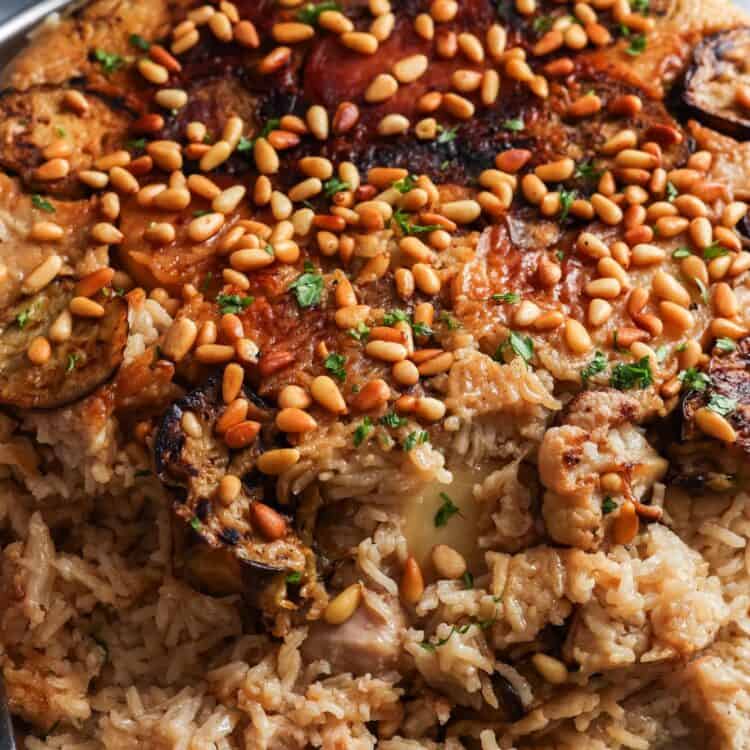

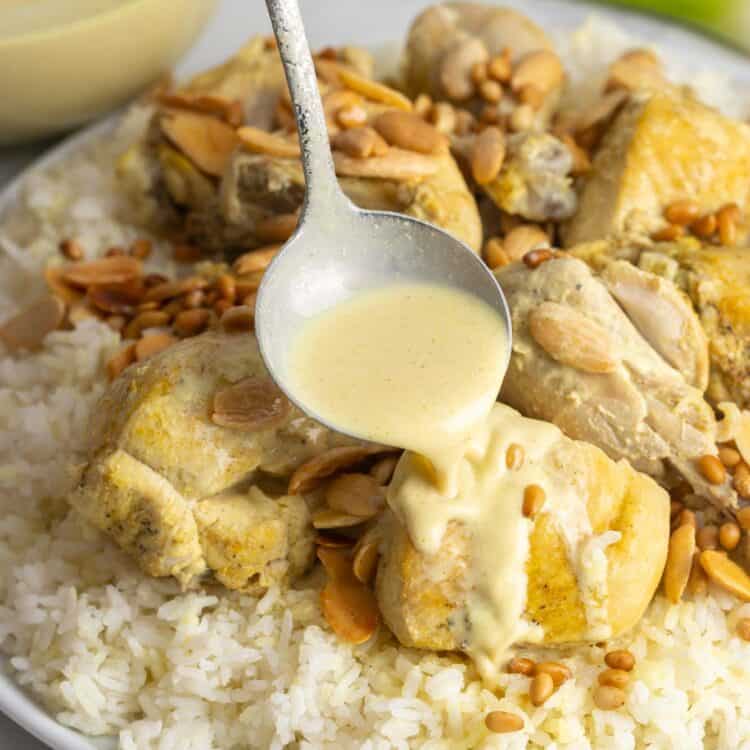
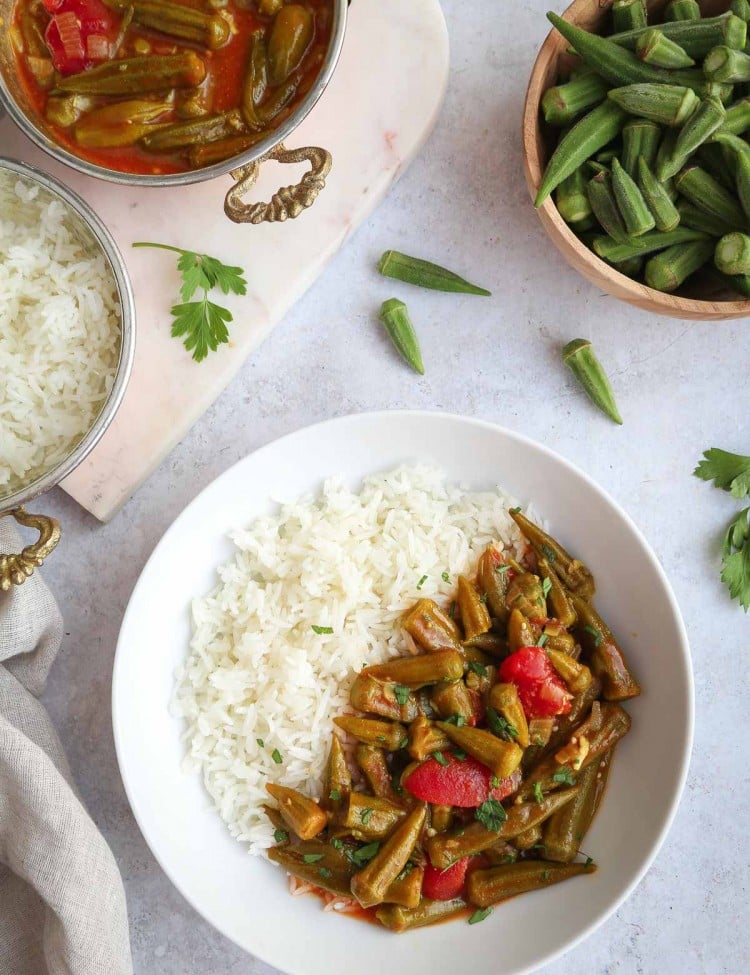
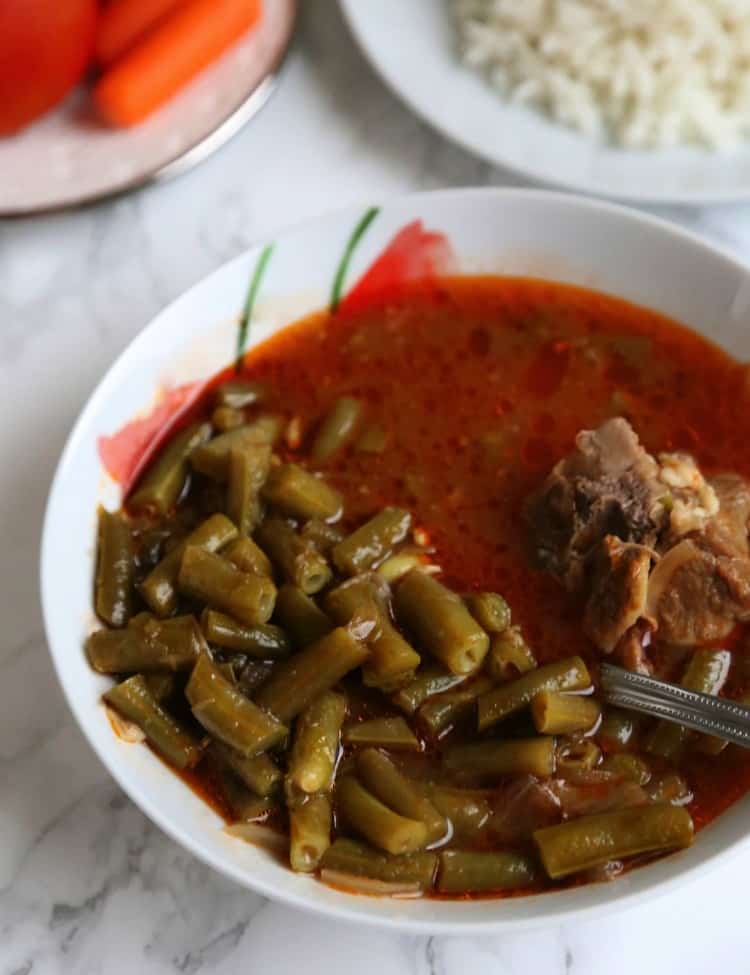
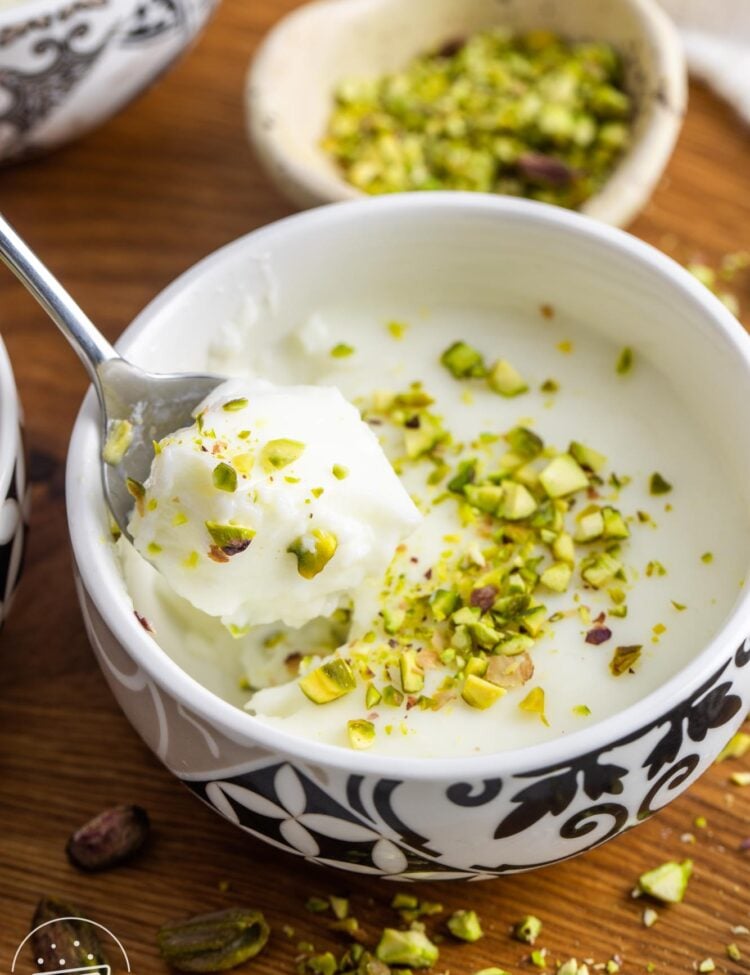
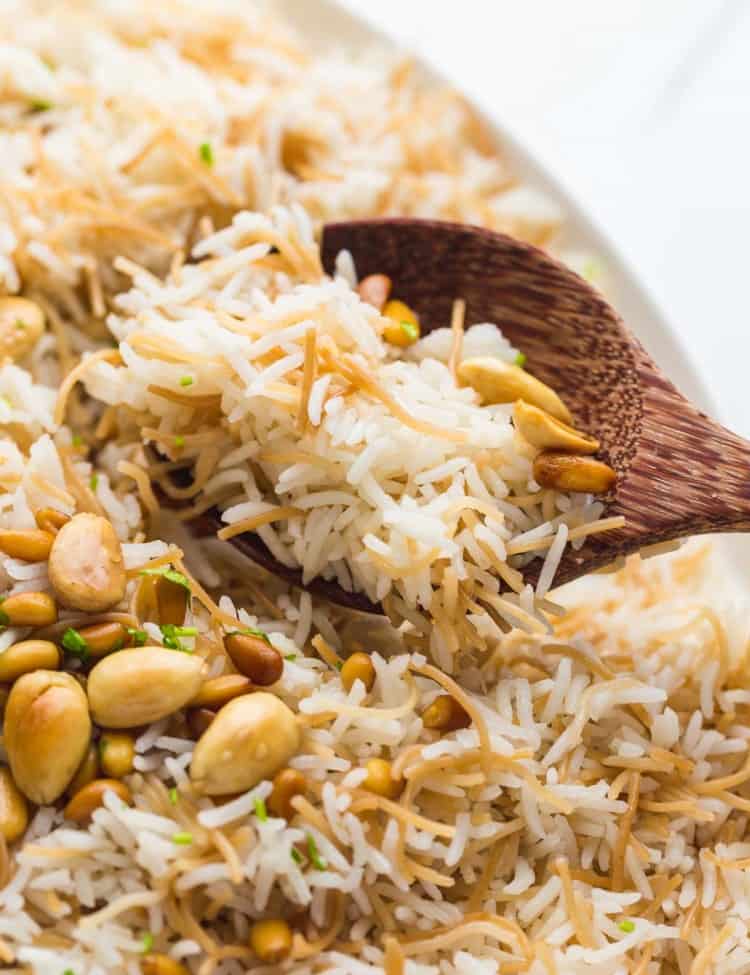
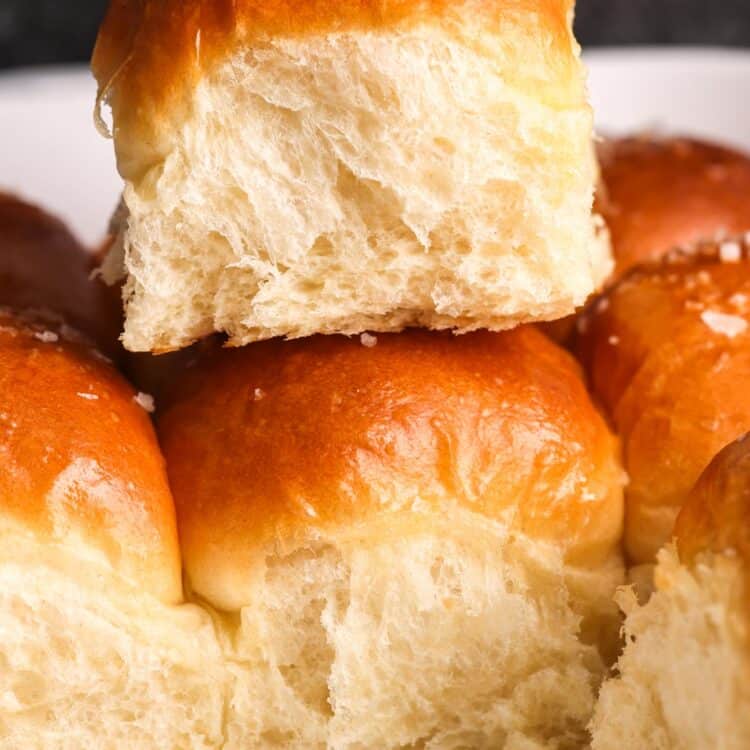
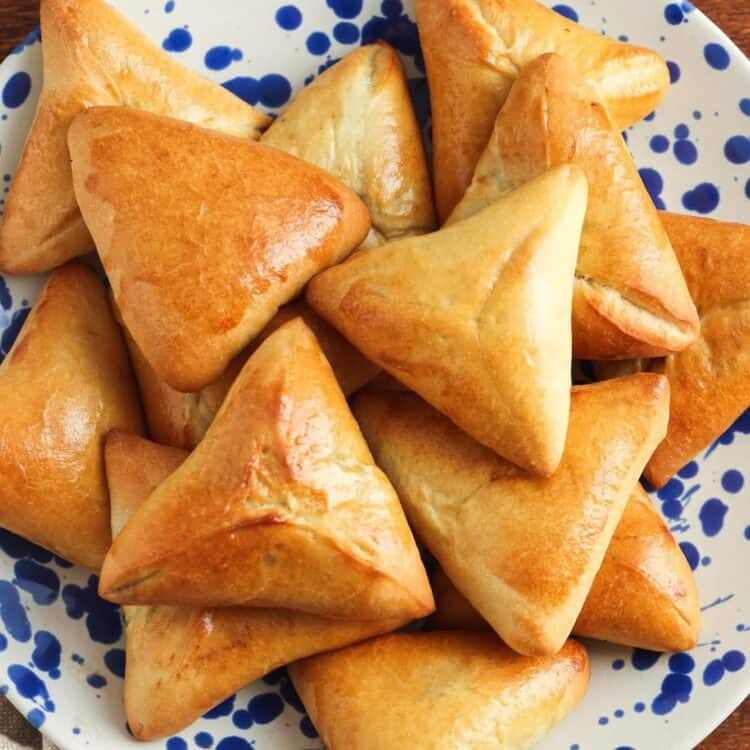
Mansour says
We raised domestic rabbits when I was a child. Egyptian, used Rabbit meat as the traditional/ conventional instead of chicken and that’s why we adopted the Egyption or the Gazan style molokhia. Now with the lack of rabbit meat availability, we use boiled chicken with all the spices. Kuzbara, sumac, salt, lemon juice and lots of roasted garlic.